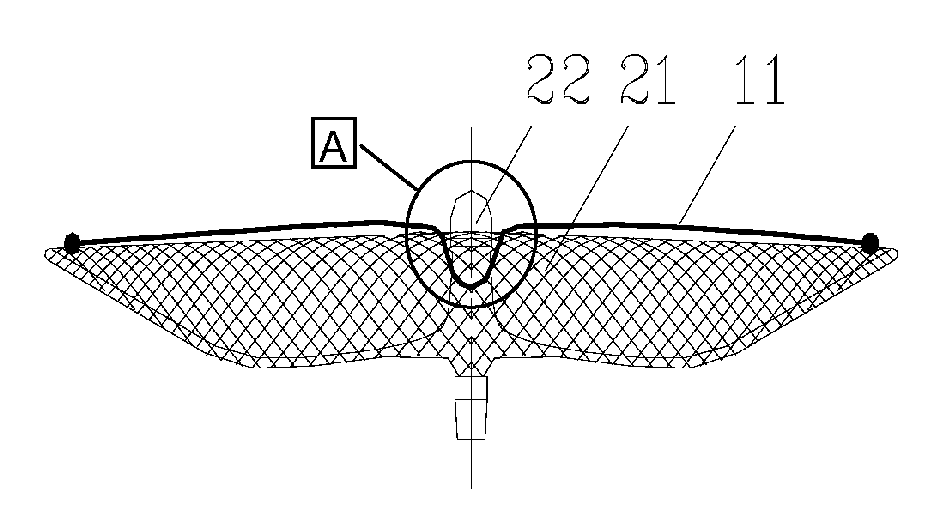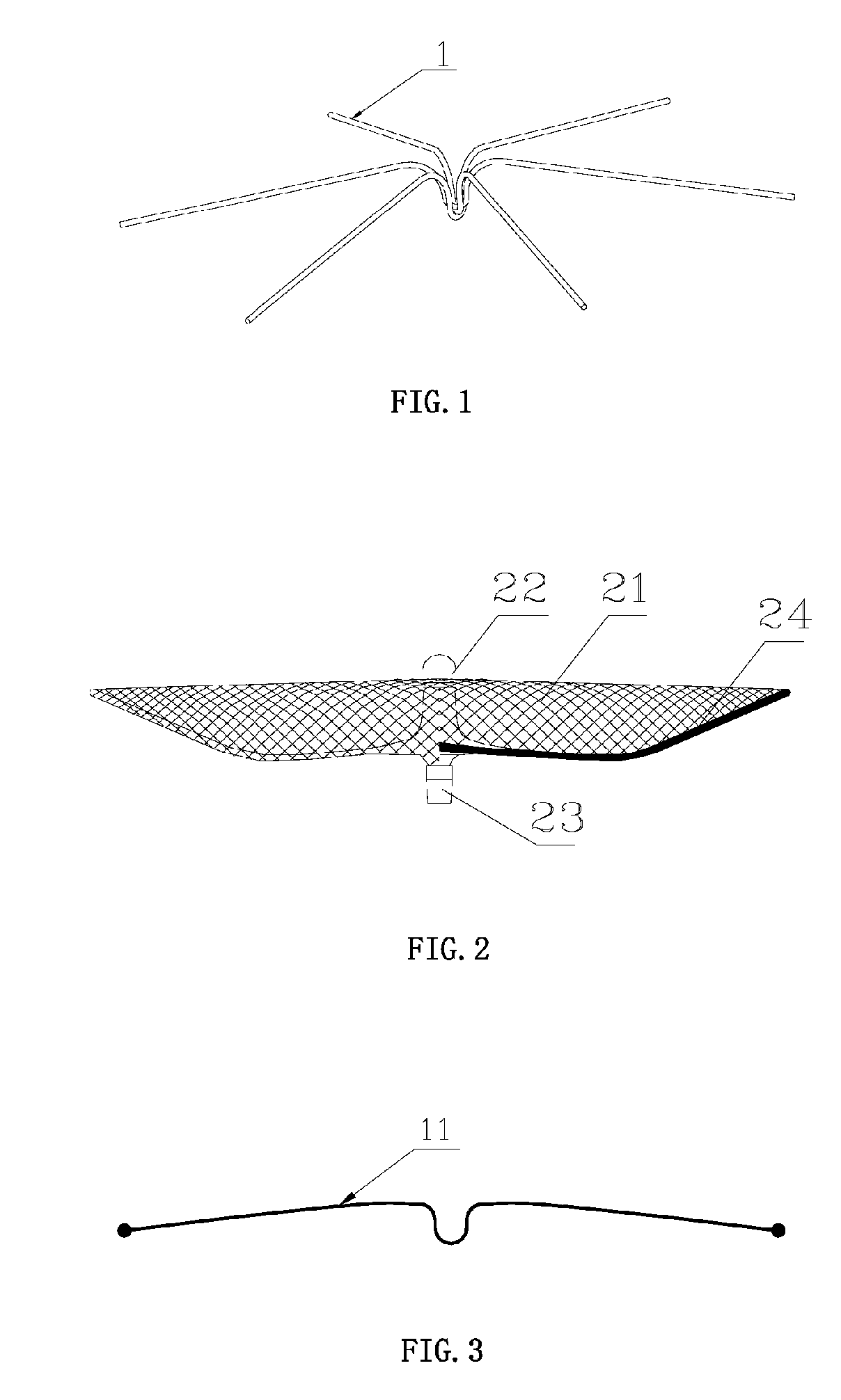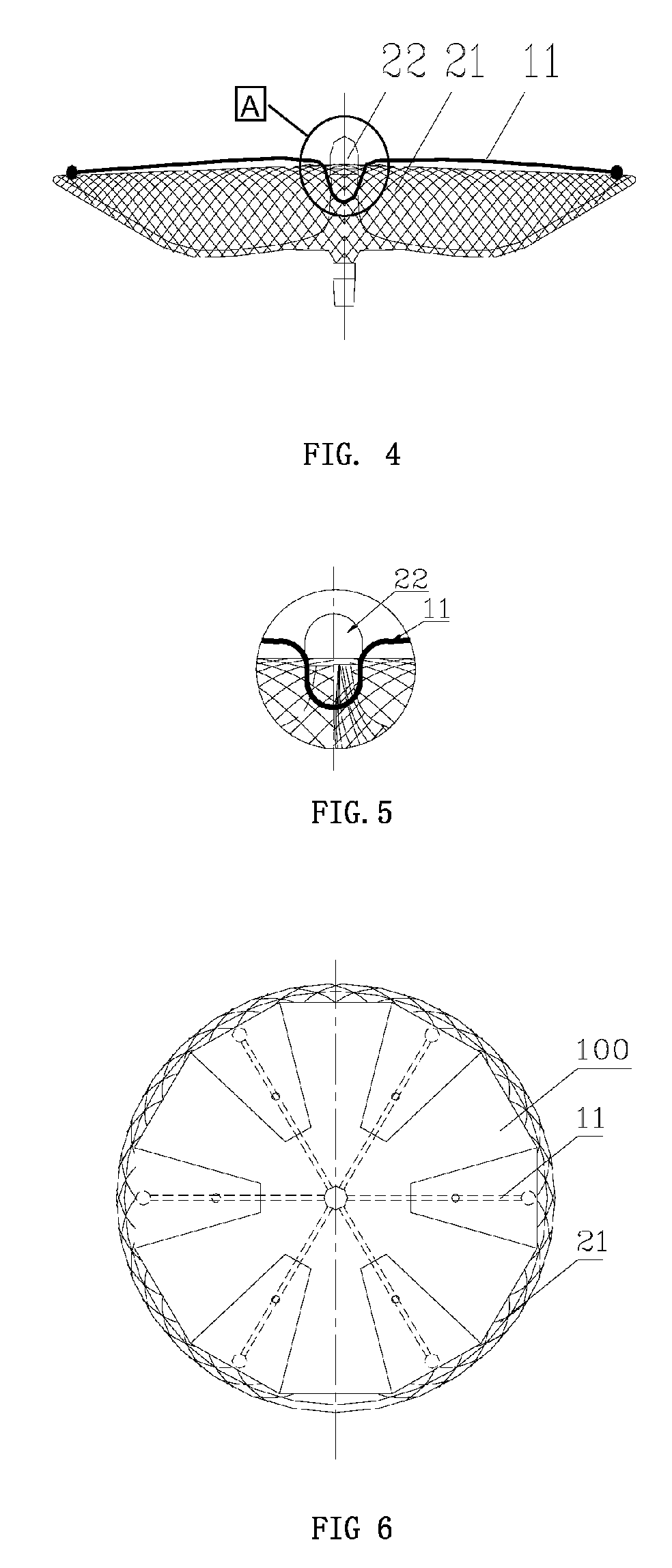Heart septal defect occlusion devices with adjustable length tether adapting to the unique anatomy of the patient
a technology of occlusion device and heart septal defect, which is applied in the field of occlusion device for treating congenital heart disease, can solve the problems of forming thrombosis and releasing harmful metallic elements, unable to automatically adjust the angle, and requiring repair, so as to improve the closing ability, reduce thrombosis, and facilitate operation
- Summary
- Abstract
- Description
- Claims
- Application Information
AI Technical Summary
Benefits of technology
Problems solved by technology
Method used
Image
Examples
Embodiment Construction
[0024]The present invention provides a heart septal defect occlusion device for occluding an anatomical aperture, such as a patent foramen ovale occluder shown in FIG. 4. The occluder comprises right disc 21 (i.e. metal mesh disc), tip 22, joint 23, left disc 1 which is covered with membranes, and membranes 100, as shown in FIG. 1 and FIG. 9.
[0025]The present invention will be described using a PFO occluder as an example. The maximal character of the PFO occluder, when compared with those of the above-referenced patents, is that the left disc 1 comprises six skeletons 11 which are spaced apart evenly. And the six skeletons are linked together in the center and form a radial-extending disc. It is possible that the left disc 1 may comprise at least two skeleton 11 as shown in FIG. 3, and skeleton 11 is made from nitinol wire with shape memory. FIG. 11 illustrates the mould which is used to heat treat skeletons 11; the mould includes upper-mould 201, middle-mould 202 and under-mould 20...
PUM
 Login to View More
Login to View More Abstract
Description
Claims
Application Information
 Login to View More
Login to View More - R&D
- Intellectual Property
- Life Sciences
- Materials
- Tech Scout
- Unparalleled Data Quality
- Higher Quality Content
- 60% Fewer Hallucinations
Browse by: Latest US Patents, China's latest patents, Technical Efficacy Thesaurus, Application Domain, Technology Topic, Popular Technical Reports.
© 2025 PatSnap. All rights reserved.Legal|Privacy policy|Modern Slavery Act Transparency Statement|Sitemap|About US| Contact US: help@patsnap.com



